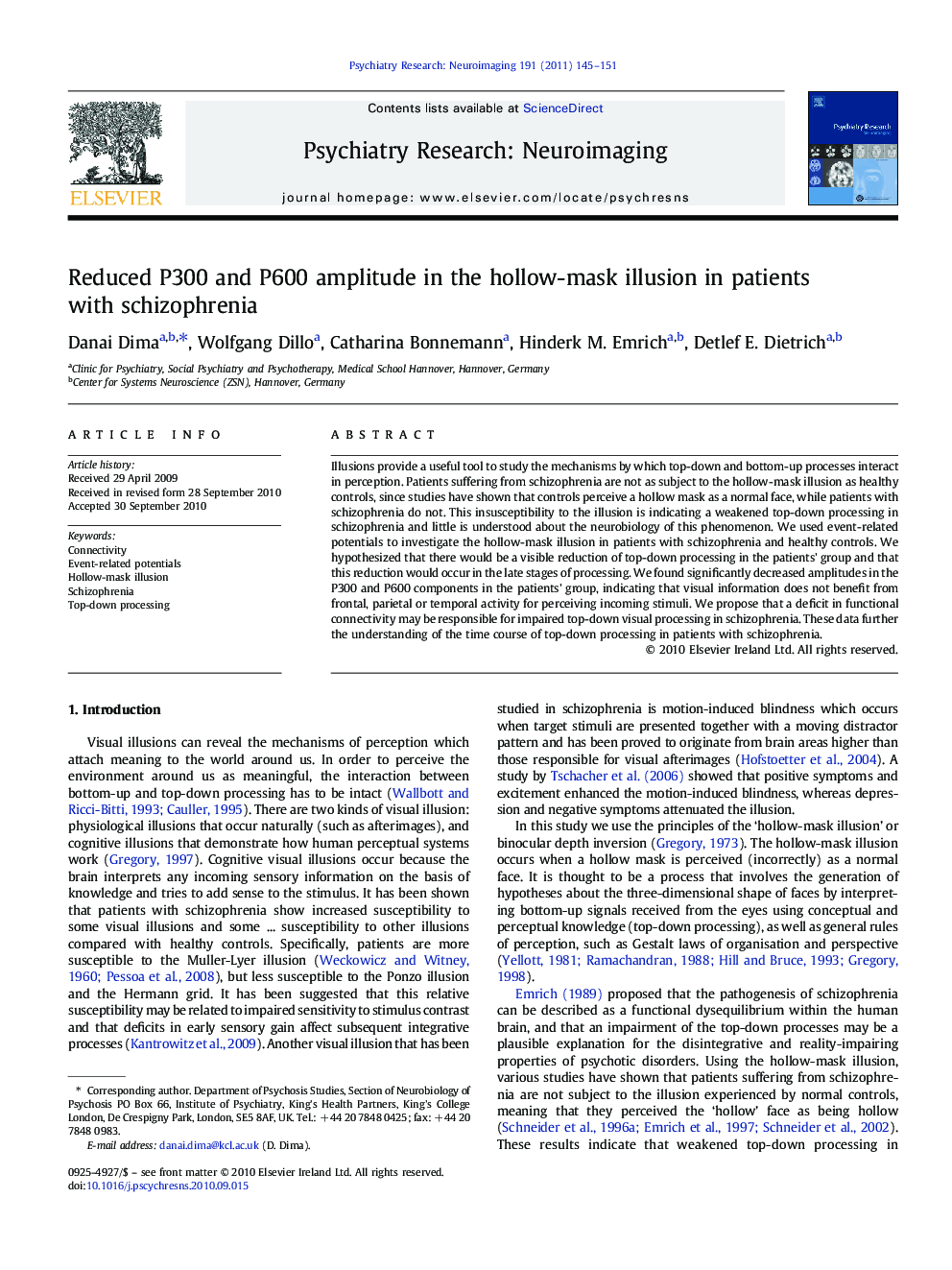| Article ID | Journal | Published Year | Pages | File Type |
|---|---|---|---|---|
| 334830 | Psychiatry Research: Neuroimaging | 2011 | 7 Pages |
Illusions provide a useful tool to study the mechanisms by which top-down and bottom-up processes interact in perception. Patients suffering from schizophrenia are not as subject to the hollow-mask illusion as healthy controls, since studies have shown that controls perceive a hollow mask as a normal face, while patients with schizophrenia do not. This insusceptibility to the illusion is indicating a weakened top-down processing in schizophrenia and little is understood about the neurobiology of this phenomenon. We used event-related potentials to investigate the hollow-mask illusion in patients with schizophrenia and healthy controls. We hypothesized that there would be a visible reduction of top-down processing in the patients' group and that this reduction would occur in the late stages of processing. We found significantly decreased amplitudes in the P300 and P600 components in the patients' group, indicating that visual information does not benefit from frontal, parietal or temporal activity for perceiving incoming stimuli. We propose that a deficit in functional connectivity may be responsible for impaired top-down visual processing in schizophrenia. These data further the understanding of the time course of top-down processing in patients with schizophrenia.
